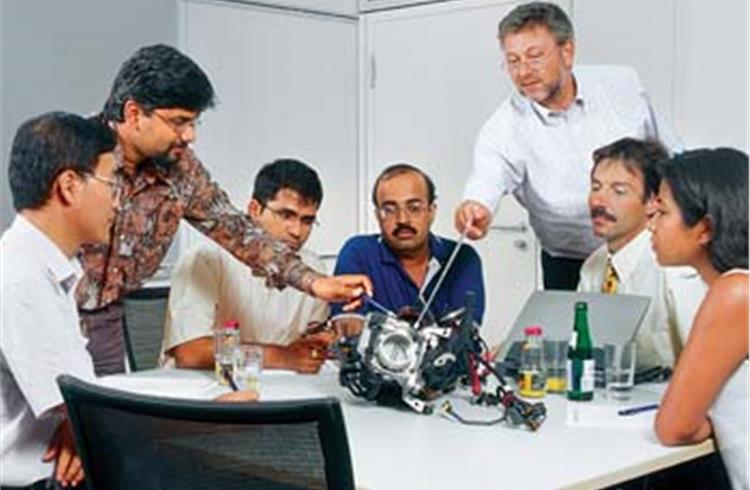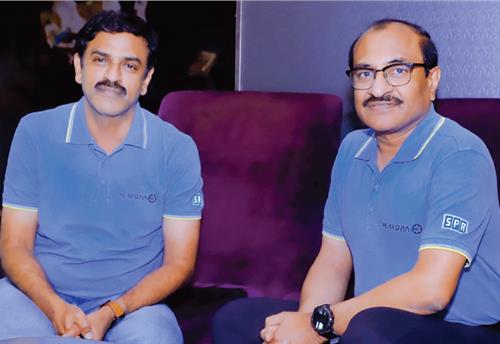Strategic localisation
Leading consulting firm Boston Consulting Group (BCG) has recently conducted a large scale study of the global automotive manufacturer and supplier industry called ‘Winning the Localisation Game: How Multinational Automotive OEMs and Suppliers Are Realising the Strategic Potential of China and India’. At a recent seminar, the firm’s Munich-based partner and managing director, Dr Nikolaus Lang used this study as the basis for this presentation called ‘Successful in India: Market Entry and Market
At the outset Lang reaffirmed the long term growth potential of the Indian automotive market despite the recent difficulties being faced due to the global slowdown. He said that according to Global Insight and BCG estimates, India offers sustained long term growth and on the basis of compounded annual growth (CAGR) the domestic automotive market (including passenger cars and light commercial vehicles) is expected to increase by 17 percent during the period from 2007 to 2015.
This would make it the fastest growing automotive market in the world, with China growing a more modest 11 percent, Brazil at around seven percent and Russia by 11 percent during the same period. Overall growth in the global auto industry during these years would be a more modest four percent according to BCG, thanks to much lower growth rates of one percent in North America, and flat growth in Western Europe and Japan, during these years.
As a result, India’s share of global sales is expected to grow significantly from around 2.5 percent in 2007, to 3.5 percent in 2010 and then up to 4.9 percent in 2015. However, these numbers would still be well below the Chinese share of the global market, which was 11.5 percent in 2007, and is expected to increase to 14.6 percent in 2010 and 16.7 percent in 2015.
Lang says that OEMs and suppliers typically move through five stages of localisation when they enter an emerging market like India or China. He terms these stages as Home Players, Exporters, Explorers, Settlers and Global Players. In the early stages companies barely serve emerging markets through exports, then they gradually increase the independence of their local companies and eventually these entities operate independently of the head office and assume global responsibility for some or all of the key business functions. As a result, companies carry out increased R&D, sourcing, manufacturing and sales activities in emerging markets, as the size and importance of that market grows on the global stage.
Degree of localisation
According to BCG, the degree of localisation of the auto industry in India is in between that of China and Russia. The top companies in India have already reached at least the ‘Settler’ stage, whereby they operate relatively independently from the head office covering all key functions with local staff and organisation. However, R&D still lags behind other functions like sourcing, manufacturing and sales. In China, on the other hand, leading players have already reached the ‘Global Player’ stage, while Russia is still very much an import market, with limited manufacturing especially for suppliers.
Among the areas that BCG sought to address with its study were the role of the Indian research centre, how to increase sourcing volumes from India, the ways to lower production costs in India, how to manage quality, how to increase penetration with local manufacturers and the strategy for adapting cars to the local market. BCG concluded that localisation in India requires thorough flexibilisation.
Elaborating on this, Lang says that successful globalisation means having an increasing share of business from India and the setting up of polycentric organisations with strong Indian operations. Real localisation means moving from entering India to embedding operations in the local environment and tapping the full potential of India along the value chain. Finally, flexibilisation means reviewing core processes along the value chain to allow for approaches tailored to India. It also means shifting from a conquering approach to an understanding approach.
Giving some examples of companies that have proved successful in India, Lang says that Bosch has done a good job of collaborating with local manufacturers and giving autonomy to its local research operations. Volvo and Toyota have moved away from sourcing simple parts in India and moved towards developing local suppliers with their best engineering staff. In the area of manufacturing, Hyundai has led the way by shifting global production of small cars to India, thereby increasing the scale of its operations within the country. Indian component company Sona Koyo has proved that global levels of quality are achievable in India using a total quality management programme and in terms of sales both Ford and Honda have shown how to adapt cars to local markets following a revamp, customisation or low cost car strategy.
BCG believes that there is significant potential to step up R&D activities in India, given the over 400,000 engineering graduates who enter the workforce every year. However, many of these are focussed on the IT sector rather than mechanical engineering. In terms of the challenges of producing high quality products in India versus developed markets, BCG says there are several challenges. In terms of quality control, Indian companies would have limited or manual quality controls, while western OEs would have more high-tech systems. As for automation, it would be much simpler in India and there would be most likely be manual assembly lines and material handling, while it would be automated abroad.
RELATED ARTICLES
BRANDED CONTENT: Eliminating the worries of battery charging with smart solutions
The charging infrastructure is the backbone of electric mobility but is also one of the key perceived barriers to EV ado...
The battery-powered disruptor
Greenfuel Energy Solutions is planning to shake up the EV battery market with the launch of a portfolio of specially eng...
SPR Engenious drives diversification at Shriram Pistons & Rings
The engine component maker is now expanding its business with the manufacturing of motors and controllers through its wh...





 By Autocar Pro News Desk
By Autocar Pro News Desk
 04 Feb 2009
04 Feb 2009
 2828 Views
2828 Views









